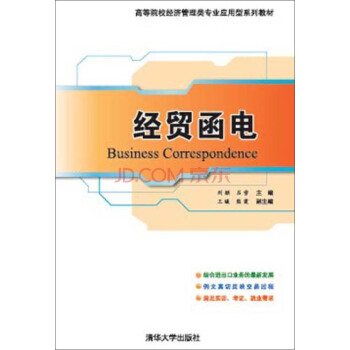电气信息类专业英语阅读与写作
作者: 李亚宁
出版时间:2014年7月
出版社:中国电力出版社有限公司
- 中国电力出版社有限公司
- 9787512335769
- 86760
- 0047154055-9
- 平装
- 16开
- 2014年7月
- TN01
- 电气工程及其自动化
- 本科
本书可作为普通高等院校电气信息类及相关专业的专业英语教材,也可供高职高专院校师生和相关专业的工程技术人员参考。
前言
Part1 Basic Program
Unit1 单句写作基本语法
1.1 词类
1.2 插入语、否定、时态、语态、形容词和副词比较级
1.3 动词非谓语形式
1.4 从句
Part 2 Science and Professional English
Unit 2 Stampede on the Superhighway
Unit 3 Traffic Technology Drives to Clear the Roads
Unit 4 The Robot Farm
Unit 5 Analysis of Sinusoidal Current and Voltage
5.1 RMS (Effective) Values of Current and Voltage
5.2 Representation of Sinusoidal Time Functions by Vectors and Complex Number
5.3 Addition of Sinusoidal Time Functions
Unit 6 Construction and Application of DC Machines
6.1 Construction of DC Machines
6.2 Application of DC Machines
Unit 7 Research on Integrated Monitoring and Prevention System for Stray Current in Metro
7.1 The Generation of Stray Current and It's Harmfulness
7.2 The Problems Existing in the Conventional Monitoring and Prevention System for Stray Current
7.3 The Research on New Integrated Monitoring and Prevention System for Stray Current
7.4 Conclusion
Unit 8 Railway Electric Power Feeding Systems
8.1 Introduction
8.2 World Railway Electrification Systems
8.3 History of Railway Electrification in Japan
8.4 Various Feeding Systems
8.5 Overhead Line Systems
8.6 Materials in Overhead Lines
8.7 Maintenance ofOverhead Lines
Part 3 Focus on Writing
Unit 9 英文书信及常用应用文的写作
9.1 信封的写法
9.2 书信的组成部分和页面安排
9.3 常用应用文简介
Unit 10 Formal Letters in English
10.1 Namecards
10.2 Conventions ofFormal Letters Writing
10.3 Formal and Informal Styles
10.4 Transition Task
Unit 11 Using Statistics
11.1 Using Tables
11.2 Using Bar Charts and Pie Charts
11.3 Using Graphs
11.4 Using Charts and Graphs:Writing Task
Unit 12 科技英语中数字及数学公式的表达
12.1 数制的问题
12.2 数字及数学公式表达中常用的词汇
12.3 科技英语中常用符号及数学式
Unit 13 科技英语论文写作
13.1 科技论文的组成部分
13.2 摘要(Abstract)
13.3 科技论文及其摘要的写作注意事项
13.4 科技论文本身内容的构成
Part 4 Scientific Paper Expansion Reading
Unit 14 Analysis of Rail Potential and Stray Current for Taipei Metro
14.1 Introduction
14.2 Characteristics ofTraction Power Substations Grounding
14.3 Field Tlests
14.4 Design ofthe Simulation Model
14.5 Field Test and Simulation Results
14.6 Conclusion
Unit 15 Study on Integrated Automation System of Traction Substation for Express Railway Lines
15.1 Introduction
15.2 Characteristics
15.3 Structure
15.4 Functions
15.5 Applications
Unit 16 Stray-Current Corrosion Control in Metros
16.1 Introduction
16.2 Rusting
16.3 Prevention of Rusting
16.4 Passivation
16.5 Separate Earthing Systems
16.6 Controlling Stray Currents
16.7 Bonding
16.8 Alternatives
16.9 Monitoring
16.10 Trends
16.11 Acknowledgement
Unit 17 Stray Current Corrosion in Buried Pipeline
17.1 Introduction
17.2 Background
17.3 Experimental
17.4 Results
17.5 Discussion
17.6 Conclusions
Unit 18 Simulation Analysis of Zhengzhou Metro Power Supply System Rectifier Unit
18.1 Introduction
18.2 Simulation Model
18.3 Harmonic Analysis of Power Supply System
18.4 Conclusions
Unit 19 Analysis and Design of a Single-Axis Automatic Solar Tracking and Power Filtering System for Solar Power Generation
19.1 Introduction
19.2 Solar Tracking Dynamics-Single Axis Tracking Near the Earth's Equator
19.3 Single Axis Solar Tracking Control Circuit Design
19.4 Solar Power Filtering System
19.5 Conclusion











